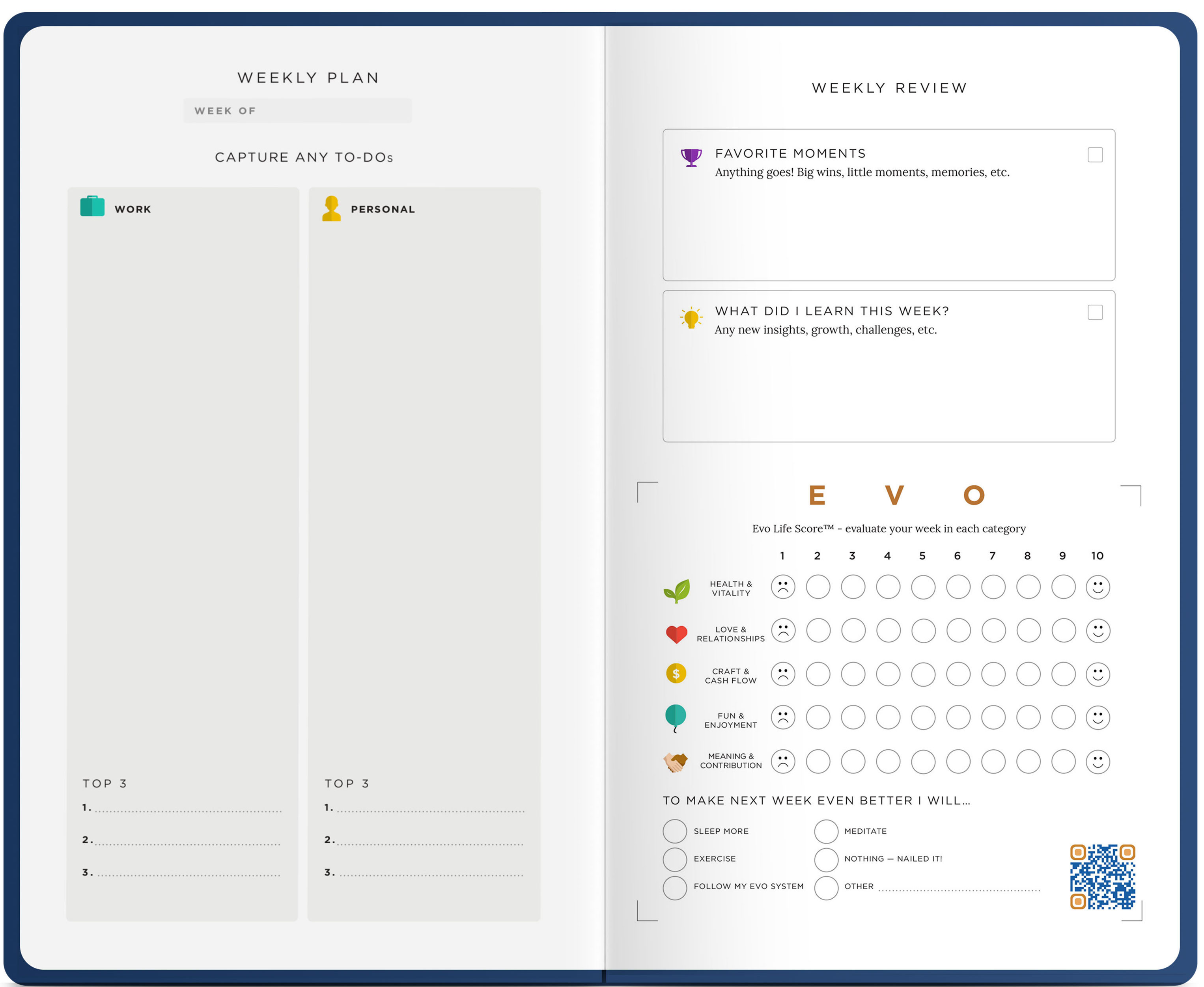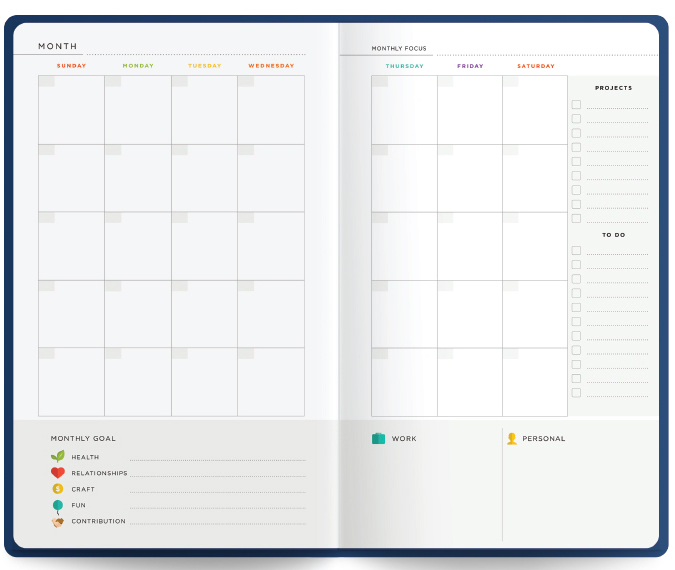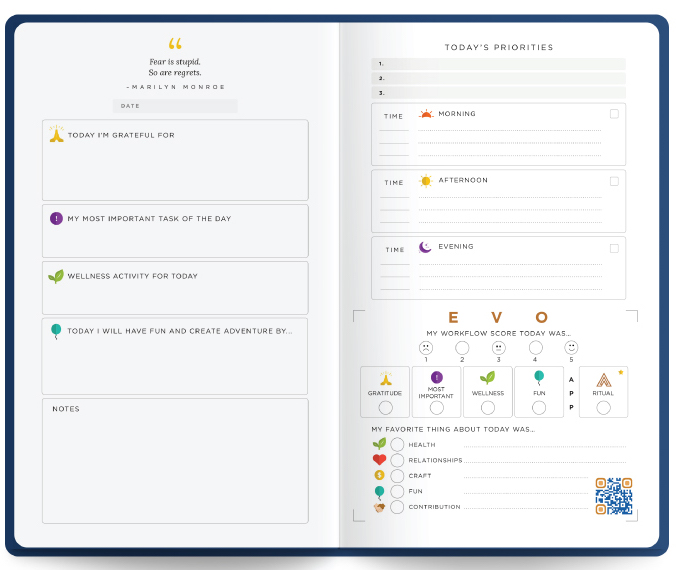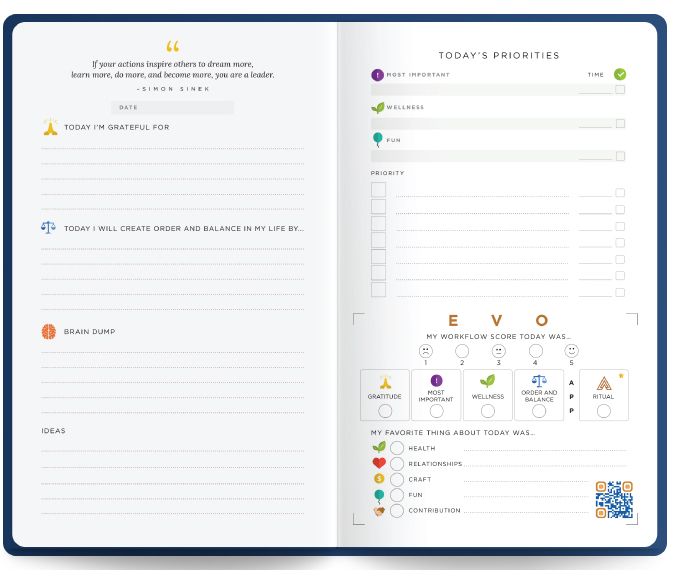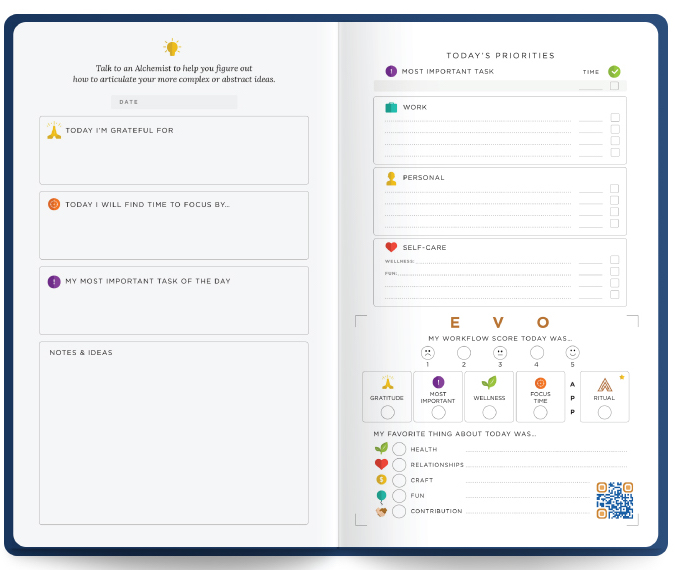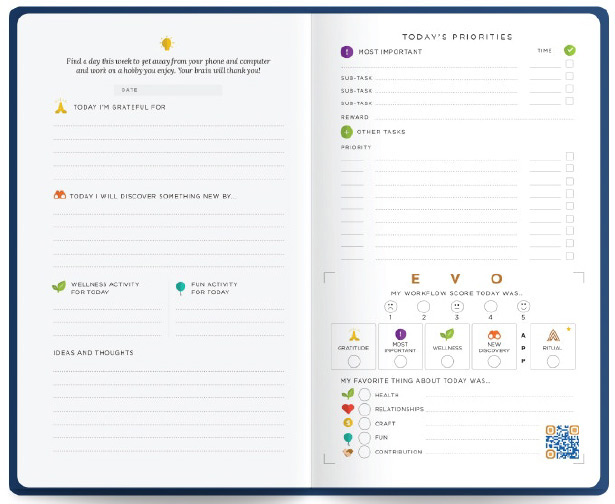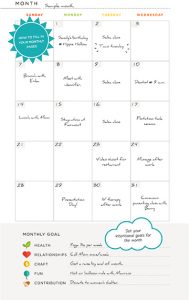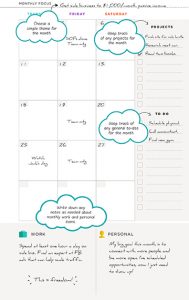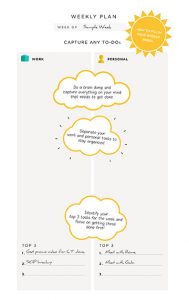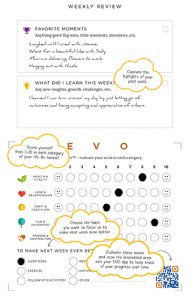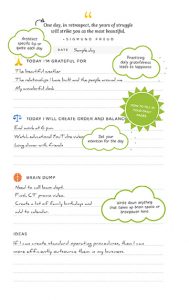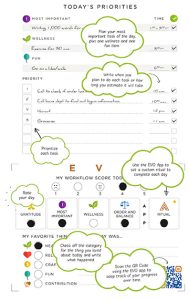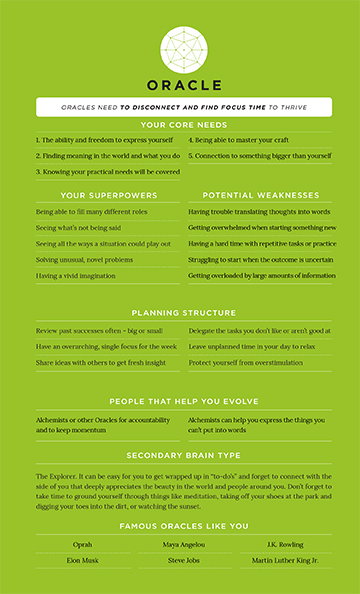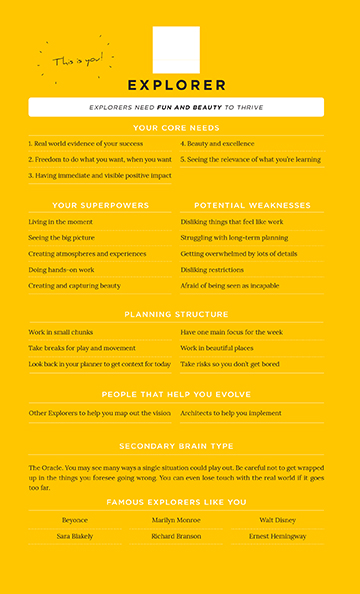BLOG
a
Top 5 Personality Assessments Of 2020: An Analytical Comparison
by Iris Strauss
0 views
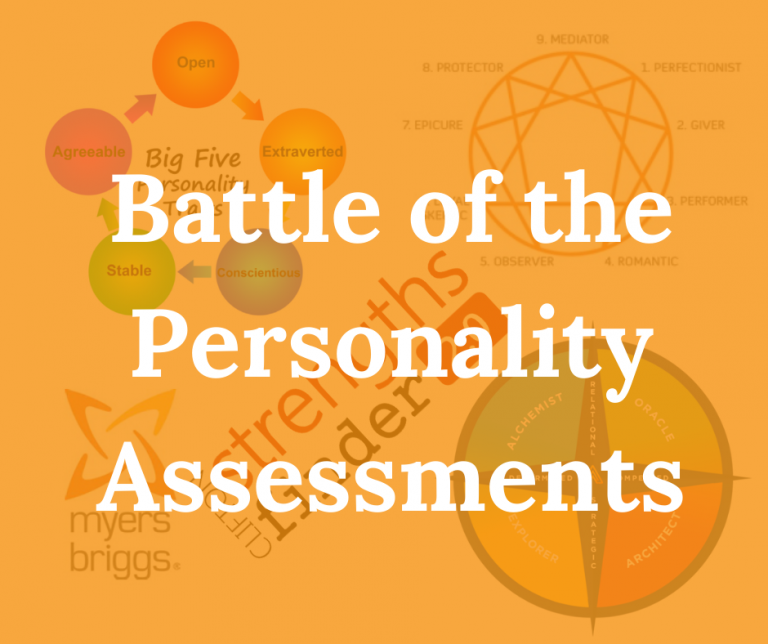
Personality assessments are becoming more popular than ever, as more and more people seek to understand themselves, and where they fit into the world on a deeper level. You’ve probably taken at least one, whether it was for a school or work exercise, a job application, because an obsessed friend sat you down and made you take it, or simply because it’s fascinating to learn more about yourself.
During the late 19th and early 20th centuries (sometimes dubbed the “First Wave” of modern psychology), psychology’s primary concern was mental disorders—the primary question psychologists were seeking to answer was, ”What’s wrong with you?”
However, post-World War II, people became more interested in understanding how the average human operated. Early mid-century collective social values—family, cultural identity, and proper social behavior—gave way to Behavioral Psychology. Since most western lives revolved around assimilating into groups, impacting an individual’s behavior was the most prominent and important job of psychologists—if they could change the patient’s behavior, they thought all the patient’s problems would be solved.
But the individualism and soul-searching of the 1960’s and 70’s gave way to Humanistic Psychology, which emphasizes self-reflection and personal development. It was the culmination of these different waves of psychology that birthed the idea to assess average, healthy individuals to determine and categorize their unique strengths, weaknesses, fears, abilities, mental processes, and behavioral patterns. Hello, personality assessments!
Today there are hundreds of different personality assessments available—some are geared toward specific groups of people, professionals, students, teams, or leaders; others are unspecific about their ideal audience. Some assessments are based on complex psychological theories and hypotheses; others are based on simple concepts like an individual’s strengths, fears, or even their favorite color. The range of assessments, what they’re based on, and the kind of results they give you are nearly as wide and varied as the number of assessments themselves.
While it would be impossible to compare or rank every single assessment against each other, let’s compare the merits and drawbacks of some of the hottest and most popular personality assessments on the market today. You can decide for yourself which one might best help you on your own journey of self-discovery and personal evolution. We’ll explore:
Myers-Briggs Type Indicator (MBTI)
Enneagram
EVO Elements Assessment
Big Five Personality Test
Clifton Strengths (formerly known as StrengthsFinder)
1. Myers-Briggs Type Indicator
Premise
Myers-Briggs is probably the most ubiquitous and well-known personality system on the market, with it’s assessment—the Myers-Briggs Type Indicator (MBTI for short) being used in different contexts, by different people and organizations all over the world. In addition to its legitimate iterations available to take both online and in-print, countless copy-cat assessments also abound online.
Myers-Briggs uses a forced-choice dichotomy system to categorize people into one of 16 different types. There are four categories which you are put into:
- Introversion or Extraversion—your “favorite world” where you derive energy, either internally or externally.
- Sensing or Intuition—whether you take information at face-value, or interpret and add meaning to it.
- Thinking or Feeling—focus on logic and consistency, or people and special circumstances.
- Perceiving or Judging—when it comes to the outside world, do you prefer structure and decisiveness, or would you rather keep your options open?
The idea is that everyone must fit into one of these categories over the other. Your result is then codified into a four-letter acronym to describe which category you have been sorted into—a person with the result of Introversion/Sensing/Feeling/Perceiving could be shortened to “ISFP,” for example.
History
In the early 1900’s Isabel Briggs Myers and her mother, Catherine Cook Briggs, created their own formulation of different personality types, based on their observations and understanding of the individuals around them. In 1923, the pair learned about Carl Jung’s research** on psychological types, and integrated his understanding of people into their system.
From this understanding, the first version of the Myers-Briggs Type Indicator was born in the 1940’s. This was in the U.S. during WWII, as many new employees (many of them women who previously stayed at home full time) entered the workforce and needed help deciding what profession they would fit in best. Early research for this assessment was used in medical schools to try to determine which types of people might be most content in the medical field, and which types would end up choosing certain medical specialties.
In 1962, Myers wrote and published a guide to her system, Introduction To Type, which is still in print and can be used for further study of the Myers-Briggs system.
Pros of Myers-Briggs
Simple
Although humans are complex and often difficult to understand, this system presents a template for understanding differences in people in a very simple, straight-forward way. This is part of the reason for the success and popularity of the Myers-Briggs personality system—it’s easy for the majority of people to grasp.
Familiar
Because it is so widely known in popular culture today, chances are that you or someone you know is already familiar with Myers-Briggs and the MBTI. If you’re looking to take a personality assessment, starting with one you already know something about can be helpful to jumpstart your journey of self-discovery.
Compels Theory of Mind
This could be said of just about any personality assessment, but it’s especially true for one so popular and well-known: having some frame of reference for understanding that some people are just fundamentally different from you, and operate differently to how you operate can be very eye-opening.
Psychologists call this phenomenon “theory of mind.” Developing a better theory of mind helps facilitate empathy and compassion for others, especially those vastly different from ourselves.
Cons of Myers-Briggs
Pseudo-Science Reputation
While plenty of research projects have been devoted to Myers-Briggs typology, and it’s actual reliability and validity is on-par with other personality type assessments, it’s gotten a bad reputation in the scientific community, perhaps due to the copy-cat assessments out there who represent themselves as legitimate, without being held to the same standards the Myers-Briggs Foundation holds themselves to.
Forced-Choice Dichotomy
Instead of expanding on the processes presented in this system and taking into account the incredible complexity of the human mind, the MBTI forces individuals into one category or the other. While people may default to one way of doing things a lot of the time, this system makes no allowance for the idea that people are never 100% consistent, or that the way they operate may change over time as they grow.
This can result in reducing the way an individual’s mind works down to an obvious behavior—like consistently being late—without taking into account all the external factors that influence that behavior, and the internal reasoning behind that behavior, which might be different for different people, even if the results seem the same, having led to the same behavior externally.
Wish or Expectation Fulfillment
Again, this can be true for many personality assessments, but it may be particularly tempting with MBTI, considering the popular knowledge and connotation of different type identifiers in our society.
It can be very appealing to answer questions on the MBTI based on how you wish you were, or how your parents, authority figures, peers, etc., have expected you to be—many people can do this without realizing it. This may be because certain traits or behaviors are held in esteem or idolized over others, leading people to get the results they want, rather than the results that are more accurate to who they are.
Summary of Myers-Briggs
Taking the Myers-Briggs Type Indicator can be an enlightening experience, especially if it’s your first journey into personality type and learning about the idea that many others are fundamentally different from you, as long as you don’t mind the dichotomous nature of its categorization. It’s also worth noting that users should be aware that if you’re not taking the official MBTI from legitimate sources, your experience of the assessment and the results may vary widely.
2. Enneagram
Premise
The Enneagram system of personality is easily one of the most nebulous and mystical systems of identifying personalities—and depending on who you ask, it can be either the most simple or, potentially, the most complex. Its most basic description can be summed up as nine categories of personality, with a simple single digit numerical naming system—types are labeled as simply 1, 2, 3, 4, 5, 6, 7, 8, and 9*.
Here are the basics of each Enneagram Type, according to the Enneagram Institute:
- Type 1 is principled, purposeful, self-controlled, and perfectionistic.
- Type 2 is generous, demonstrative, people-pleasing, and possessive.
- Type 3 is adaptable, excelling, driven, and image-conscious.
- Type 4 is expressive, dramatic, self-absorbed, and temperamental.
- Type 5 is perceptive, innovative, secretive, and isolated.
- Type 6 is engaging, responsible, anxious, and suspicious.
- Type 7 is spontaneous, versatile, acquisitive, and scattered.
- Type 8 is self-confident, decisive, willful, and confrontational.
- Type 9 is receptive, reassuring, complacent, and resigned.
It’s helpful to see the system drawn out in the shape of the enneagram (yes, it’s also a geometric shape, which may also be important to the personality system, depending on who you ask):
In their book, The Wisdom Of The Enneagram, Don Riso and Russ Hudson explain that, “The Enneagram represents personality patterns as defence mechanisms which are fundamentally driven by certain basic fears.”
Each of the nine personalities in this system falls under one of three categories:
- Head, also sometimes called the “Thinking Center”
- Heart, also sometimes called the “Feeling Center”
- Gut, also sometimes called the “Instinctive Center”
The types are divided into these categories like this:
Most Enneagram experts say that it is normal to see a little of each of the nine types in yourself, but assert that one of them should stand out as being most true for each individual (with or without the help of a written assessment), identifying that as one’s “core type.”
In addition to your core type, each of the nine can be further differentiated by identifying their “wing;” that is, the adjacent number on either side of the individual’s core number that lends important, and sometimes slightly contradictory elements to your core personality type. So, for example, one might be a core type 7, with either a 6 wing, or a 8 wing.
According to Enneagram expert and coach, Katherine Fauvre, individuals also have a “tritype,” made up of one’s core type, and one of each of the other three categories—Head, Heart, and Gut. If wings also factor in to an individual’s tritype, as many people claim, then what started out as a simple system of nine categories can turn into a complex network of hundreds of combinations of characteristics!
Add in the Instinctual Variants—which are unconnected to any specific Enneagram type or category, these three sub-categories seek to describe how individuals instinctually view themselves and their relationship to others:
- Self-Preservation
- Sexual, or “Attraction”
- Social, or “Adaptive”
With all of these factors, Enneagram could potentially be used to describe and identify over 1,000 different types of personalities. With all factors included, a single individual’s result could look like this:
3w4, 9w1, 6w5, (396), Sp/So
History
It seems that this system was derived from a myriad of “ancient wisdom traditions,” but there are definitely two key players who had a hand in making The Enneagram Of Personality what it is today: spiritual teacher Oscar Ichazo, and psychologist Dr. Claudio Naranjo, who studied under Ichazo for several years before defining his own path as a teacher of spiritual, psychological, and personality-based wisdom.
As a geometric symbol, the enneagram has been around for thousands of years, at least as far back as to be contemporary with the works of Pythagora, who created the pythagorean theorem. The enneagram symbol was used as a basis for describing the relationship between human essence, and ego. As Ichazo put it,
“We have to distinguish between a man as he is in essence, and as he is in ego or personality. In essence, every person is perfect, fearless, and in a loving unity with the entire cosmos; there is no conflict within the person between head, heart, and stomach or between the person and others. Then something happens: the ego begins to develop, karma accumulates, there is a transition from objectivity to subjectivity; man falls from essence into personality.”
(Interviews with Ichazo, page 9)
Pros of Enneagram:
Embraces Individuality
One of the most common complaints from those who scoff at the idea of personality assessments is that a lot of them box people in—attempting to put people into categories where they don’t perfectly fit, and leaving no room for the concept of individuality. Surely every person in the world can’t fit neatly into one of 9 categories, right?
But Enneagram is a system that can expand to describe people with plenty of nuance, from wings, to tritypes, to instinctual variants. If you’re looking for a personality system that describes many aspects of who you are, and separates you from potentially thousands of other kinds of people, this is a great assessment.
Less Inherent Bias
While other systems use language to describe certain types of people that may carry either positive or negative connotations, Enneagram uses a simple numerical system to identify the types of people its seeking to categorize. Identifying as a 3w4 carries a lot less linguistic baggage than identifying as someone who is in the 70th percentile of Disagreeableness.
Emphasizes Self-Study
Unlike a lot of other personality systems, most experts agree that people should seek out Enneagram information, descriptions, and learning materials either as an aid to taking an Enneagram assessment to ensure the correct results, or as the primary method of discovering one’s type.
Cons of Enneagram:
Less Scientific Reputation
Enneagram is shrouded in an air of myth and mystery—it’s rooted in spiritual self-examination as much, if not more than in psychological exploration. And while there has certainly been academic research conducted on Enneagram, the reputation it has is much less scientific than say, the Big Five model, which could be considered a downside for those looking for a more scientifically reputable test.
Negative Leaning
While some personality systems have been accused of being too positive in their portrayal of different types, Enneagram, “represents personality patterns as defence mechanisms which are fundamentally driven by certain basic fears,” (The Wisdom Of The Enneagram, Don Riso and Russ Hudson) which may carry too negative a connotation for some.
Additionally, focusing solely on your weaknesses as a catalyst for growth is potentially just as unhelpful as focusing on your strengths.
Summary of Enneagram
Enneagram can be a helpful tool for those looking to do some in-depth self-reflection, especially if you’re seeking a more spiritual focus or to face your fears and work through potentially traumatic experiences in your life and how they influence your behavior.
3. EVO Elements Assessment
Premise
The EVO Elements system posits that everyone uses two of four main methods of making decisions, called your Compasses, and two of four main methods of processing information, called your Brain Type—These are the “Elements” in “EVO Elements.” These Elements are thought of as processes which are natural, inherent mental preferences that are either inborn or developed from a very early age—similar to the way people experience a preference for using either their right or left hand to do most complex tasks.
The eight EVO Elements are:
Brain Types:
- Alchemist—processing external information in an expansive, abstract way (pairs with Architect).
- Architect—internally processing information in a concrete, linear way (pairs with Alchemist).
- Oracle—internally processing information in an abstract, nebulous, and non-linear way (pairs with Explorer).
- Explorer—processing external information in an expansive, concrete way (pairs with Oracle).
Compasses:
- Determined —making quick, in-the-moment decisions based on what is objectively logical and most effective solution (pairs with Compelled).
- Compelled—making long-term, contemplative decisions based on one’s own internal moral and ethical gut instincts (pairs with Determined).
- Relational—making quick, in-the-moment decisions based on one’s gut instincts and what best serves the collective (pairs with Strategic).
- Strategic—making long-term, contemplative decisions based on one’s own internal logical framework and the most accurate/precise solution (pairs with Relational).
The Elements are presented here as pairs because together, each pair portrays the expansive and complex nature of human mental abilities. This system proposes that an individual will use one set of Compasses and one set of Brain Types—although the extent to which an individual uses them or the complexity with which they experience their Elements will differ depending on their own personal makeup.
EVO Types are referred to by their top Compass and top Brain Type, with an asterisk denoting which of these two elements is actually the individual’s first priority, so results look like this: Relational* Oracle.
EVO Elements suggests that the relationship between your Compasses and Brain Types and how they interact with each other describe who you are at your very core, how your mind works, your strengths, and your weaknesses. Compasses and Brain Types are considered expansive mental processes deeply rooted in your psyche and can help provide understanding of the trajectory of your own personal growth throughout your life.
This system is unlike many other personality systems, which use behavior to try and define how people’s minds work. Instead, seeking to understand people’s Elements is a direct approach to getting insight into their mental processes. This may give people a deeper understanding of how they prefer to process information and make decisions, and how these preferences manifest in various strengths, as well as how they may create blind spots or challenges for each individual.
Another component of this system is to identify your top Crafts—which describe various roles you play in life. Since your Crafts are separate from your EVO Elements, they are not as deeply rooted in your psyche as your Compasses and Brain Types. The understanding of these roles comes from a more behavioral perspective than the EVO Elements—people may take on different roles throughout their life. EVO Crafts have names such as Innovator, Rebel, and Star, and along with your EVO Type, your results include your top three Crafts, including suggestions for getting better aligned with these roles.
History
Launched in late 2019, this is one of the newest assessments out currently. The original inspiration for the concept of this system was Swiss psychiatrist Carl Jung’s theory presented in his book Psychological Types**. EVO Elements Assessment creator Beckett Hanan began studying the works of Jung in the early 2000’s, later teaming up with several others, including Iris Strauss who now works for EVO as their Elements Expert, to conduct interviews with people from all walks of life, all over the world, to determine how Jung’s theories held up. Throughout these interviews and 1-on-1 sessions, they also made extensive notes and looked for patterns in the language people use to describe their specific processes and mental landscapes.
Hanan brought their research to Project EVO co-founders Chad Mureta and Arman Assadi in the mid 2010’s, and the team set about creating their own language to describe this new system, which had grown beyond and expounded on the ideas outlined by Jung in much more depth. After developing their system and testing many iterations of their assessment for over a decade, the EVO Elements Assessment was first released in October, 2019.
Pros of EVO Elements
Focus On Mental Processes
Rather than focusing on specific behaviors, which could be done for a myriad of reasons, and change day-to-day, EVO Elements puts the focus on mental processes to understand the core of who individuals really are, their strengths and their weaknesses.
This not only makes the results more insightful, but many users have also reported that they feel their EVO Assessment results are more accurate than results they’ve received after taking other personality assessments.
A Balanced Approach
Rather than primarily focusing on the positive or negative aspects of individuals, EVO Elements takes a more holistic approach. It highlights hidden strengths people might not know they have, as well as acknowledging the reality of how their weakness can play out in their lives.
It’s Actionable
When you get your EVO Elements Assessment results, you are given a detailed roadmap with a myriad of suggestions for how to use the information to improve your strengths and strategies to cover your weaker areas, which is especially helpful for anyone who has taken an assessment of this nature and thought, “What now?”
Cons of EVO Elements
More Complex
Because the focus is on mental processes over traits and behavior, this system is more complicated than many other personality systems. The relationship between Element combinations and how they rely on each other and work together is complex and nuanced, which means the concepts may not be as readily understood by those who don’t take the time to delve into learning the system.
Less Info Available
Because it’s so new, there is less information available about the EVO Elements system than other systems that have been around for decades.
Summary of EVO Elements Assessment
This assessment can be a powerful tool of self-discovery and help facilitate personal growth, with the added benefit of improving communication, theory of mind, and relational dynamics when multiple people in a group learn about their Elements together. But it might not be a good fit for those unwilling or unable to take the time to truly understand the concepts presented.
4. Big Five Personality Test
Premise
This test assesses five different aspects of an individual, known by the acronym “OCEAN”:
- Openness to experience
- Conscientiousness
- Extraversion
- Agreeableness
- Neuroticism
This test ranks your scores in each of these different facets by supplying users with 60-80 statements (depending on the source site where the test is accessed), which are rated anywhere between 1, for Strongly Disagree, and 5 for Strongly Agree, along with a series of demographics questions about areas of life such as age, sex, class, education level, and family history.
What are the OCEAN traits of the Big Five based on? Rather than being based on an underlying theory like some of the other assessments we’ll explore today, the Big Five traits are simply a description of statistical data gathered by many different people over time.
Results are given to users as a statistical analysis of where they fall in each category compared to the rest of the users in the test’s database. According to Maggie Koerth-Baker in her FiveThirtyEight article, “Your results [of the Big Five Test] are based on comparing you to all the other humans who have taken the test.” For example, someone who scored as very Agreeable might receive a result that says they are in the 90th percentile of Agreeableness.
History
The concept started with the idea of Hippocrates’s four temperaments—sanguine, phlegmatic, choleric, and melancholic. Many psychologists and researchers took similar concepts and ideas and created their own theories and assessments of personality throughout the 19th and 20th centuries, based on what they deemed important factors of human behavioral patterns.
Several different, independent research groups seeking to understand what makes one person different from another claim to have been the creators or originators of the Big Five concepts and test. It’s likely that these different groups borrowed and learned from each other as they completed similar research projects simultaneously; and as early groups set aside their research or lost steam, later groups picked up and continued the work. There are many iterations of the Big Five test which are considered “official” today—The Big Five Project, The IPIP NEO-PI, the SHL OPQ Test, and more.
The research that led to this five-factor model consisted of surveying thousands of people, asking them hundreds of questions about their traits and behavior which were then statistically analyzed. From this, the five OCEAN traits emerged and the research groups arrived at the conclusion that the majority of differences between people (regardless of language or culture) could be boiled down to these five essential categories as we know them today.
Pros of the Big Five:
Scientific Reputation
It is widely purported that this is “the most scientifically valid” personality assessment, perhaps in part due to the sheer volume of scientific study that has been applied to it over the years.
It also probably helps that this is a trait-based system, rather than working from a more nebulous theory. Traits are more behavior-based, and are therefore more obvious and easier to qualify and quantify than something intangible like mental processes.
Easy to Understand
Because there are no complex theories to deal with, the Big Five, or five-factor model, is straightforward and easy enough for the majority of people to understand without much in-depth study.
Cons of the Big Five:
Potentially Sexist Results?
While it is clear that your results are given based on how you compare to the rest of the population, at least one iteration of the Big Five test uses your selection of “Male” or “Female” at the start of the test as the main basis for the pool of user data to which your results are compared.
And while it’s not an issue to present results in the context of other groups such as gender, as long as the results themselves make this clear. “You’re more/less agreeable compared to other women on average” is far different than “You’re in the 58th percentile of agreeableness,” without explaining that that’s out of the portion of the population who checked “female,” and compared to the people who ticked “male” your results might be entirely different.
Another thing some people may find problematic is how the results language changes based on the sex selection made in the demographics section, even when the same answers to the test are given.
For example, Olivia Goldhill took the Big Five test two separate times, each time selecting one of the two different options offered for identifying one’s sex, but selecting the exact same answers to every other question. In her Quartz article on sexism in the Big Five test, she writes,
“As a man, I was told that I’m ‘compassionate, good-natured, and eager to cooperate and avoid conflict.’ As a woman: ‘Generally warm, trusting, and agreeable, but you can sometimes be stubborn and competitive.’
It’s a scientifically reinforced version of the sexism that pervades society: Women who are straightforward and opinionated are told they’re difficult and argumentative, while men with the exact same character traits are seen as charismatic leaders.”
While many of the questions are asking users to compare themselves to others, and it’s true that some women may think of their behavior in comparison to other women and not to men, and vice-versa, this iteration of the Big Five seems to take it for granted that people will answer in this way or with a specific context in mind, even if they have not been instructed to do so.
Connotation of Bias Toward Certain Personalities Over Others
Terms like “Agreeable, Open, and Conscientious,” have inherently positive connotations based on the definition of the words, as well as how they are perceived and used in the context of our society.
It could be argued that the Big Five is inherently suggesting that the ideal person is orderly, extraverted, energetic, and risk-taking.
This carries the connotation that these personality traits (and therefore the people who embody these said traits) are somehow above others who don’t embody these traits, rather than acknowledging the strengths and weaknesses of all types of individuals.
Summary of Big Five
The Big Five may be a good assessment for those who are very much concerned with what research has to say about the subject of personality, so long as they don’t mind potentially biased results.
5. CliftonStrengthsFinder
(formerly known as StrengthsFinder)
Premise
The idea of this assessment is that, by focusing on what they do best and growing the areas where they’re already talented, an individual can be far more successful than if they were to focus on growing their weaker areas.
Users are ranked in 34 sub-categories (called “themes”), each of which falls under one of four domains:
- Executing
- Influencing
- Relationship Building
- Strategic Thinking
CliftonStrengths explains their themes as, “a category of talents, which are defined as recurring and consistent patterns of thought, feeling, or behavior.”
According to the Gallup-run site (yes, the same Gallup of the ubiquitous opinion polls, they also own the CliftonStrengthsFinder assessment), strengthsquest.com:
“The CSF [CliftonStrengthsFinder] is an online assessment of personal talent that identifies areas where an individual’s greatest potential for building strengths exists. By identifying one’s top themes of talent, the CSF provides a starting point in the identification of specific personal talents, and the related supporting materials help individuals discover how to build on their talents to develop strengths within their roles. The primary application of the CSF is as an evaluation that initiates a strengths-based development process…”
During the test, users are presented with the task of rating themselves between the accuracy of two statements, such as “I accept many different kinds of people,” and “I get to know people individually,” choosing whether one or the other strongly describes them, describes them a bit, or they consider themselves to be somewhat neutral between the two options. Users only have 20 seconds to make their selection on where they fall between each given option, or else the statement times out, and the next option is presented. According to the StrengthsFinder FAQ page, it takes between 35-45 minutes to complete the assessment.
At the end, results are given in a ranked fashion. If you buy the basic online assessment, you will receive your top five “Signature Strengths,” ranked in order of apparent aptitude. Or, you can buy the book Discover Your CliftonStrengths, which also comes with a code to access the same top five results. For an additional fee, users can unlock their ranking for all 34 categories, along with “action items” for each, similar to what one might receive in a coaching session based on the Strengths system.
History
Donald Clifton, whose career as a psychologist started in the 1950’s and who went on to be chairman of Gallup, started interviewing professionals with the primary question of, “What would happen if we studied what is right with people?” as the starting point for his research. He hypothesized that talent was the starting point that would almost inevitably lead to the “consistent achievement of success.” He thought that putting more time and energy into developing one’s strengths had a greater chance of leading to success than investing in and trying to develop one’s weaker areas.
Teaming up with Gallup, Clifton launched a research project that involved interviewing people in their places of business with the purpose of identifying categories of personal talent, eventually narrowing the identified categories to 34, and created the CliftonStrengthsFinder test in the 1990’s.
Pros of CliftonStrengths
Research Based
By teaming up with Gallup, Clifton had the resources to interview thousands of people who were successful in their different professions, and used the resulting data to put together a preliminary database of over 5,000 strength-based characteristics.
Although the CliftonStrengths traits are in a bit more nebulous a category, comprised of “thoughts-feelings-behaviors”, because this assessment is bound to a trait-based system, it could be categorized along with the Big Five as an assessment that is easier to qualify and quantify.
Positive Focus
Focusing on one’s strengths instead of weaknesses is appealing to many people. Those who are interested in focusing on this perspective as a tool for self improvement can find further guidance in the self-help companion book, Discover Your CliftonStrengths.
Cons of CliftonStrengths
Unbalanced
While some may love the idea of focusing solely on developing their strengths to become more successful, others may find it unhelpful and disingenuous to completely ignore their weaknesses in the context of using personality assessments for self-improvement.
On top of that, there isn’t a lot of scientific evidence to support the claim that focusing solely on your strengths is the sure path to successful self-development—and it may actually set you back instead.
Timed Response
Those with a propensity toward test anxiety might find the 20-second-per-question time limit off-putting. Although this feature is designed to make sure users aren’t over-thinking their responses, it could have the opposite effect on some, causing multiple questions to time out without being answered, therefore skewing the results to some degree.
Limited Focus
The emphasis on success in the workplace is a great thing for businesses who want to use CliftonStrengths as a development tool for their teams. However, individuals outside the corporate sphere, such as creatives, full-time parents, students, etc., might find the scope and premise of CliftonStrengths to be too limited to be fully applicable to their own lives and talents.
Underlying Negative Connotations
While it might be flattering to be told that you are naturally talented at such traits as Empathy, Communication, Discipline, or Responsibility. But the darker connotations to this kind of assertion—especially in an atmosphere of focusing on growing our innate talents only—is that, if you don’t already possess these traits, you’re simply out of luck when it comes to developing those skills.
Summary of CliftonStrengthsFinder
CliftonStrengthsFinder is an excellent tool for those looking to assess and develop their personal talents, as long as they don’t mind the lack of focus on improving weaknesses, and the subtle emphasis on corporate competence.
***
Whether or not you’re a fan of personality assessments, the fact remains that they can facilitate growth for a lot of people. Anything that helps individuals sit down and examine how they think, feel, and behave, can open their eyes to particular strengths and weaknesses in themselves they hadn’t noticed previously. Even something as simple as having language to describe something about yourself that you didn’t have previously can be revolutionary.
**Although Jung’s work also influenced the concept of Myers’ and Briggs’ personality typing system and assessment, the EVO Elements system is, at best, a distant cousin to Myers-Briggs, rather than being directly related to it, due to the nature of the research done by the respective assessment creators, the goals and intent behind the respective systems, and the way Jung’s work was used by each.
Appendix:
Possible EVO Elements Results:
Relational Architect
Relational Oracle
Compelled Alchemist
Compelled Explorer
Determined Architect
Determined Oracle
Strategic Alchemist
Strategic Explorer
EVO Crafts:
Storyteller
Rebel
Chief
Cultivator
Influencer
Weaver
Creator
Sage
Professor
Mentor
Visionary
Builder
Investigator
Persuader
Star
Advocate
Inventor
Composer
Maximizer
MBTI Types:
ENTJ
INTJ
ENFJ
INFJ
ESTJ
ISTJ
ESFJ
ISFJ
ENFP
INFP
ESFP
ISFP
ENTP
INTP
ESTP
ISTP
Enneagram Types:
1, The Reformer
2, The Helper
3, The Achiever
4, The Individualist
5, The Investigator
6, The Loyalist
7, The Enthusiast
8, The Challenger
9, The Peacemaker
CliftonStrengthsFinder Strengths:
Analytical
Context
Futuristic
Ideation
Input
Intellection
Learner
Strategic
Activator
Command
Maximizer
Self-Assurance
Significance
Communication
Competition
Woo
Adaptability
Connectedness
Developer
Empathy
Harmony
Includer
Individualization
Relator
Achiever
Arranger
Positivity
Belief
Consistency
Deliberative
Discipline
Focus
Responsibility
Restorative
